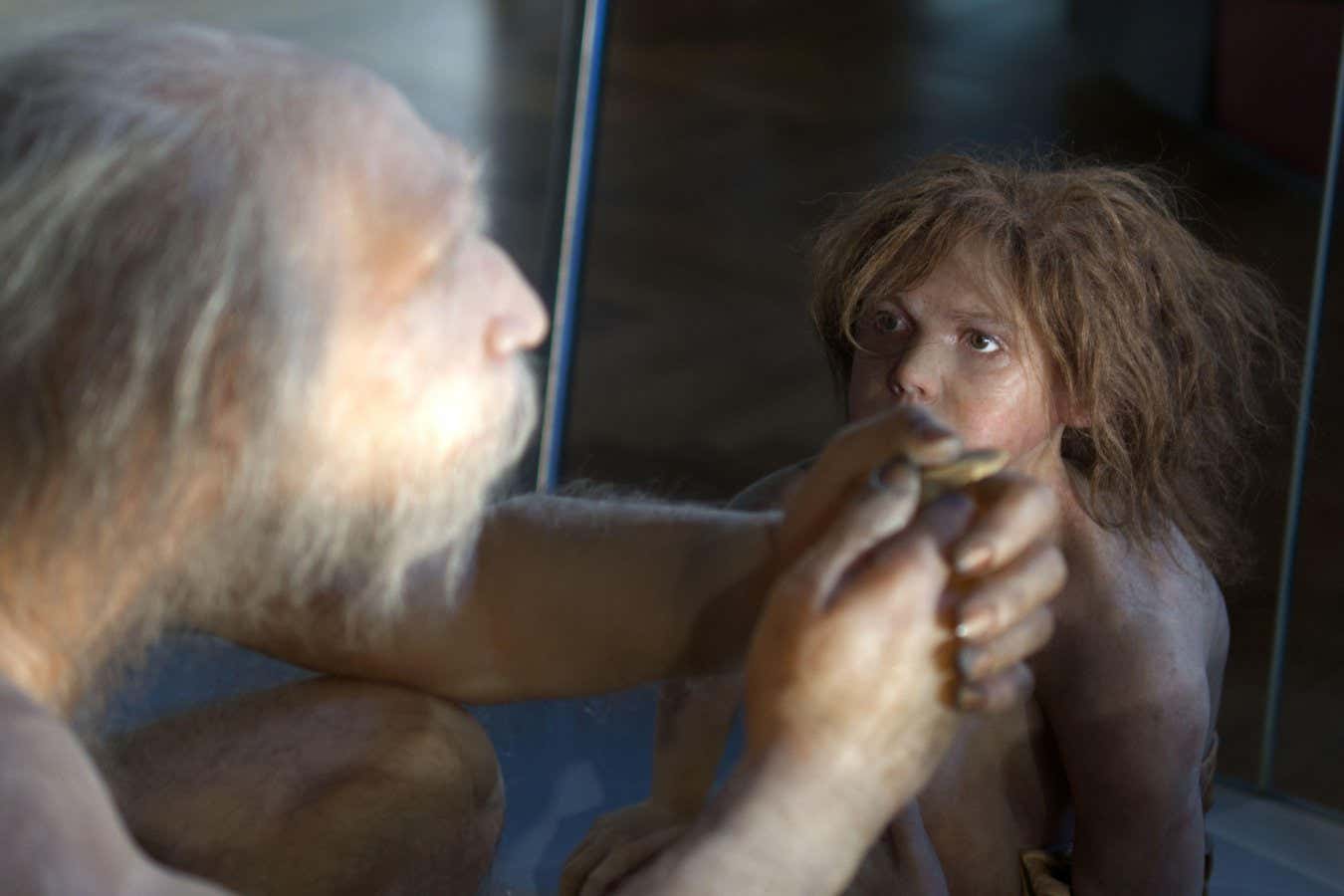A fossil bone displaying features consistent with Down’s syndrome belonged to a Neanderthal child who survived beyond 6 years old, adding to evidence that these extinct humans cared for members of their community
By Michael Marshall
26 June 2024
Neanderthal reconstruction at the Museum of Natural History Vienna in Austria
Neanderthals/Alamy Stock Photo
A Neanderthal child with Down’s syndrome survived until at least the age of 6, if interpretations of a fossilised ear bone are correct. The find adds to the evidence that Neanderthals, far from being brutish and unfeeling, routinely showed compassion for other members of their society, although researchers disagree on the extent to which the child may have needed extra attention.
Read more
The civilisation myth: How new discoveries are rewriting human history
“Neanderthals were clearly caring for people in their group, and this is a lovely example that really brings home how much they cared,” says Penny Spikins at the University of York in the UK, who wasn’t involved in the research.
Advertisement
The Neanderthal fossil was found in Cova Negra, a cave near the town of Xàtiva in eastern Spain. The cave has been excavated on and off since the 1920s, revealing that it was home to Neanderthals between 273,000 and 146,000 years ago.
Sorting through animal remains from Cova Negra, researchers led by Mercedes Conde Valverde at the University of Alcalá in Spain identified a fragment of hominin bone. It was found in disturbed sediments, so can’t be reliably dated. The bone is part of the temporal bone from the side and base of the skull, and includes parts of the inner ear.
Conde Valverde and her colleagues used CT scans to create a 3D model of the bone. This allowed them to identify it as being from a Neanderthal, not a modern human. Based on its developmental state, the bone belonged to a child who was at least 6 years old, and probably no more than 10.
